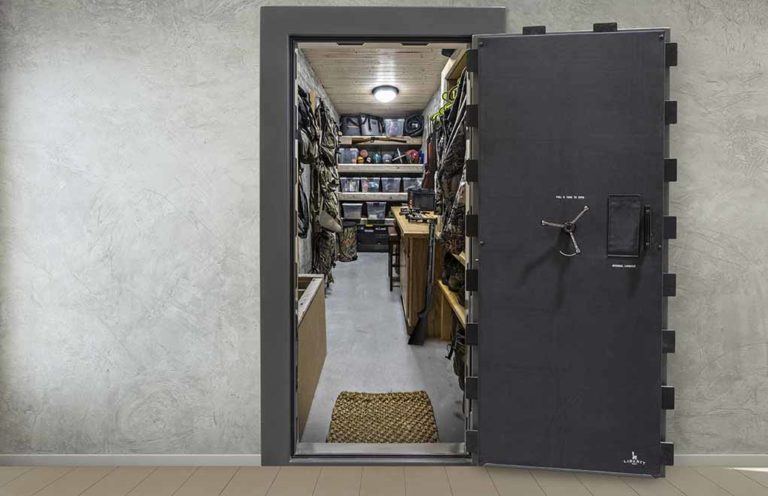
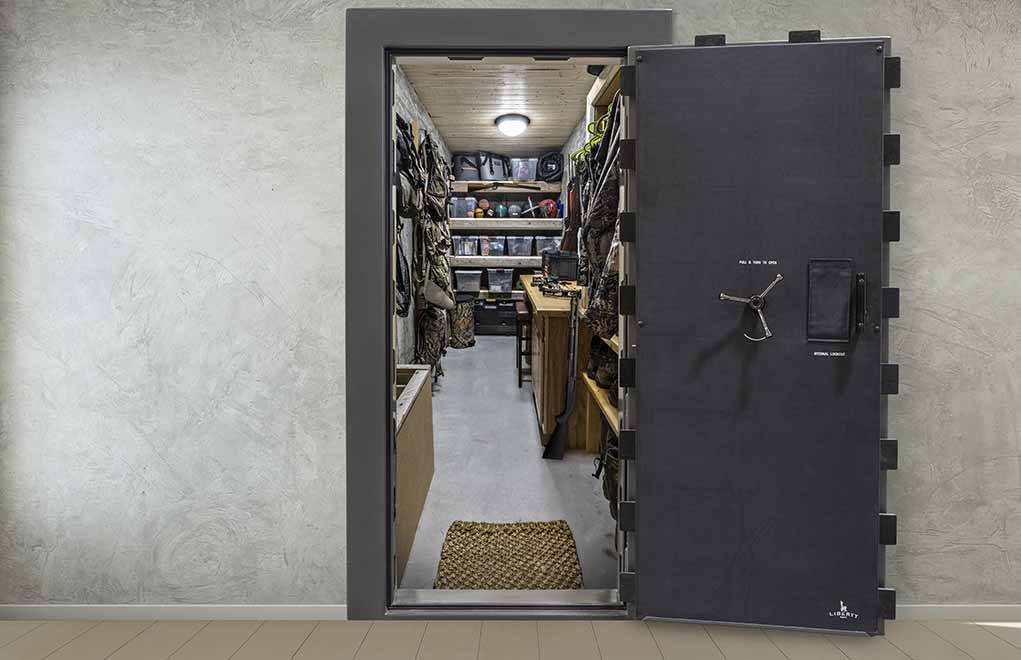
Good gun security — and financial investment security — goes far beyond your gun safe.
What You Need To Consider Securing Your Gun Collection:
It’s no secret that readers of Gun Digest have been described as “long-time firearms enthusiasts” — “super users,” if you will — with a deeper-than-average knowledge of firearms. That level of firearms knowledge comes from a lifetime of learning.
With that long-term interest in firearms often comes a considerable investment. It’s not at all unreasonable to think that many of the gun gurus flipping these pages have more than $50,000 invested in firearms and related items. In fact, I know many who far exceed that level.
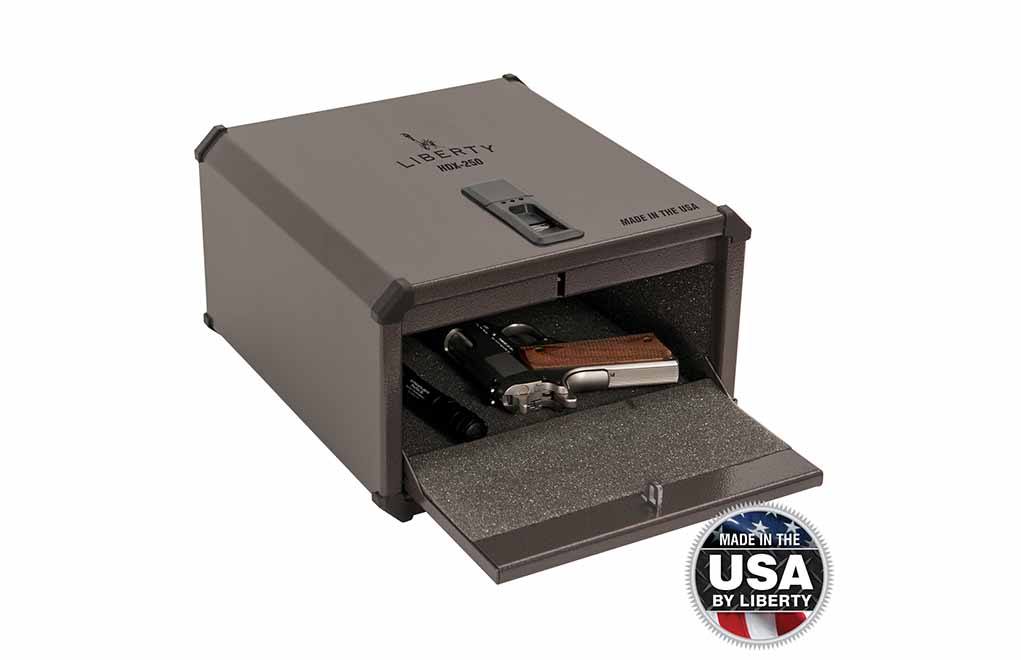
That information, along with receiving my annual bill for insurance on my guns, as well as a story from a client named Alan, prompted me to consider this article on the subject. For Alan, the story was a sad one. For you, I hope for much brighter days. But, as the saying goes: Fortune favors the prepared.
The Tale of Alan
Alan had two gun safes, but he wasn’t a regular shooter. Although he kept most of his guns in safes, like many people who have no children in their homes, he kept a revolver in a nightstand drawer and a .22 rifle in a closet.
Coming home from work one day, he noticed the door was open. On the surface, nothing was missing, but upon looking closer, he discovered the revolver was gone. He then checked the closet and found the .22 rifle still there. He went into the room with the gun safes and found one safe standing open. Some of his guns were missing. He checked the other safe; it was locked. But when he opened it, he found some of his best guns were missing. He estimated his loss at $40,000. His homeowner’s policy paid $2,500.
This isn’t an unusual occurrence. Statistics show that a burglary occurs in the United States every 9 seconds, and there are about 350,000 home fires annually. Of course, not all burglaries involve loss of firearms, but I suspect most losses aren’t sufficiently covered by insurance. Besides financial loss, the possibility of your stolen firearm being used in a crime is daunting.
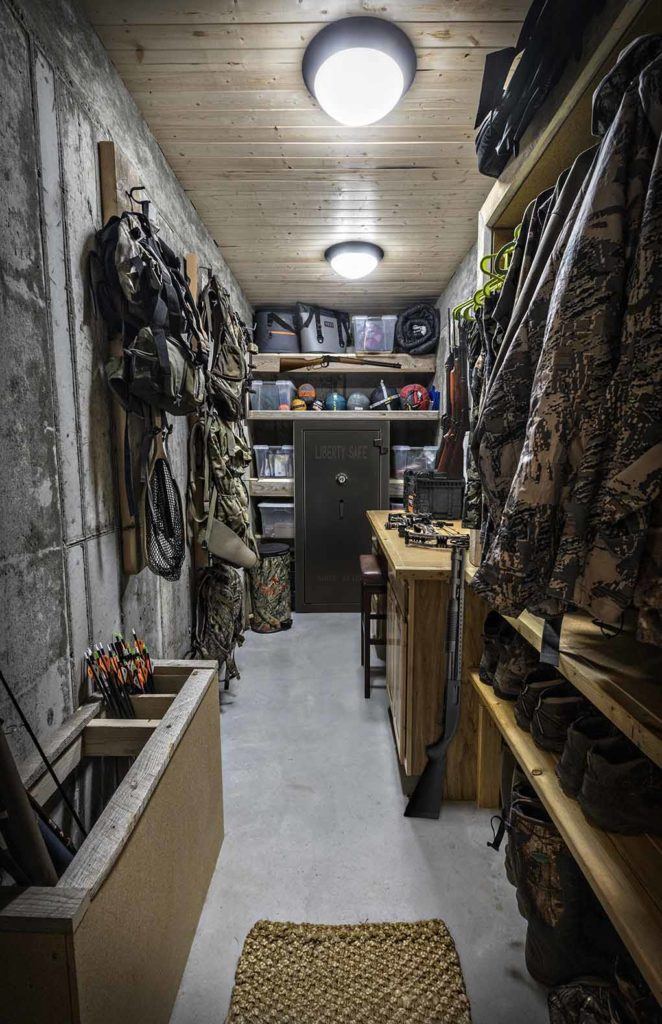
Several years ago, when I was running our state’s rifle team, a Director of Civilian Marksmanship M14 was stolen from the home of a team member. It was later discovered in a drug raid in Miami, Florida. (As you might suspect, most firearms used in crime and gang-related activity are stolen.)
Of course, basic firearms security begins with a safe and normal security measures, but there are many other considerations. In Alan’s case, the safe he found open had an electronic lock — and he never figured out how it was compromised. The other safe had a rotary mechanical lock, but it was left in the “fast-access” setting, where only one number opens the safe. Apparently, the thieves knew about that feature and simply opened the safe. So, even if safes are securely locked, theft is still possible.
Several years ago, Mike, a member of my rifle team, had one safe completely stolen, and another was staged at his front door when he came home from a daily routine. Apparently, the thieves knew he owned a lot of guns and had figured out his schedule.
Secure Your Gun Safe Knowledge:
- Complete Gun Safe Buying Guide
- The 5 Best Gun Safe Options For Protecting Your Collection
- 4 Top Handgun Safe Choices For Security And Access
- Why You Need A Vehicle Gun Safe
- 4 Best Hidden Gun Safe Manufacturers
Mike later suspected he was watched and that the thieves left the other safe because they were alerted that he was coming. His safes were bolted to the floor, but the thieves had gone under the house and removed the nuts from the bolts through the floor. Yeah, that’s determination! The only certain deterrent of locks is to prevent theft by honest people. Determined thieves are difficult to deter.
Storing in Safes
Safes are a major part of firearms protection. As in almost any other field, the best costs more money.
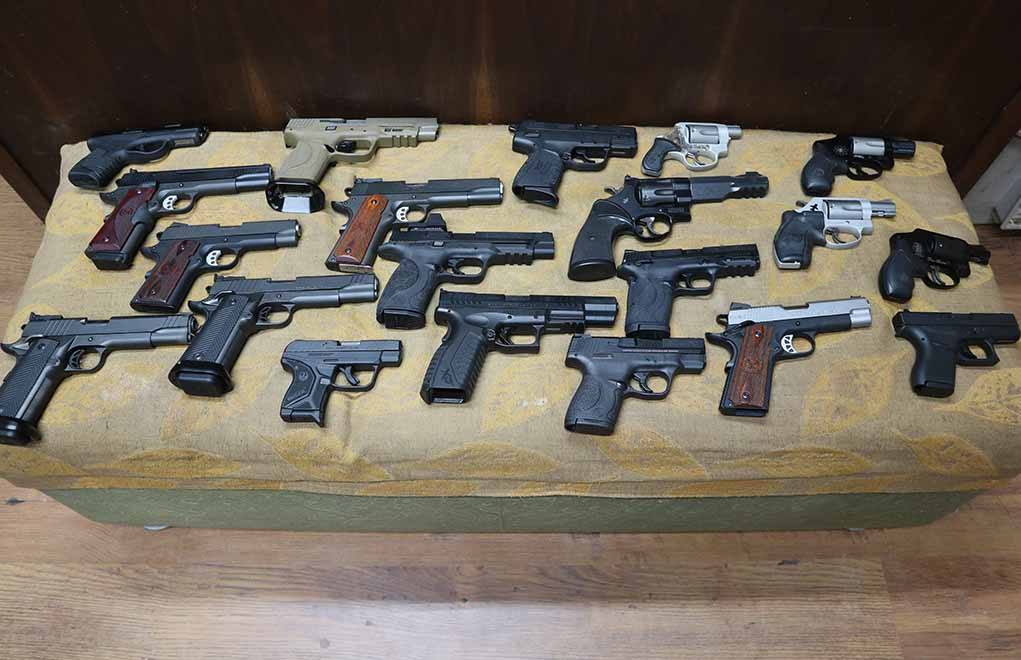
The first thing to note is that any conventional gun safe with a fire endurance rating of UL 72 Class 350 will provide basic protection for the safe contents in the event of a fire. This basic protection means that the gun safe will keep an interior temperature of below 350 degrees (F) for 2 hours when exposed to a fire burning at 1,700 degrees or for 1 hour at 1,850 degrees, depending on the unit’s construction.
Even with that rating, there’s still some possibility of damage: Imagine putting your favorite guns in your oven and setting the heat to 350 degrees and the timer for 2 hours. Safes are great, and they’re a necessity, but there’s only so much a safe can do.
Besides fire ratings, lock systems are the next decision you’ll need to make. Mechanical locks are more secure and reliable than digital locks, but they’re much less convenient. If you’re constantly accessing the contents, an electronic lock might be a better choice, because you’re less likely to leave the safe unsecured. Some electronic locks offer a keyed backup system, and this option works great.
Consider bolting in the safe, adding the use of alarm systems and simply living under the radar. All these little things contribute to an additional level of theft security.
Storage Methods
In the past, I was an avid collector of classic shotguns, and numerous times, I’ve seen really nice guns that were damaged by being stored in gun cases. Gun cases can hold moisture and prevent air from circulating, and they have probably ruined as many guns as they have protected because of those who lock a case and forget it.
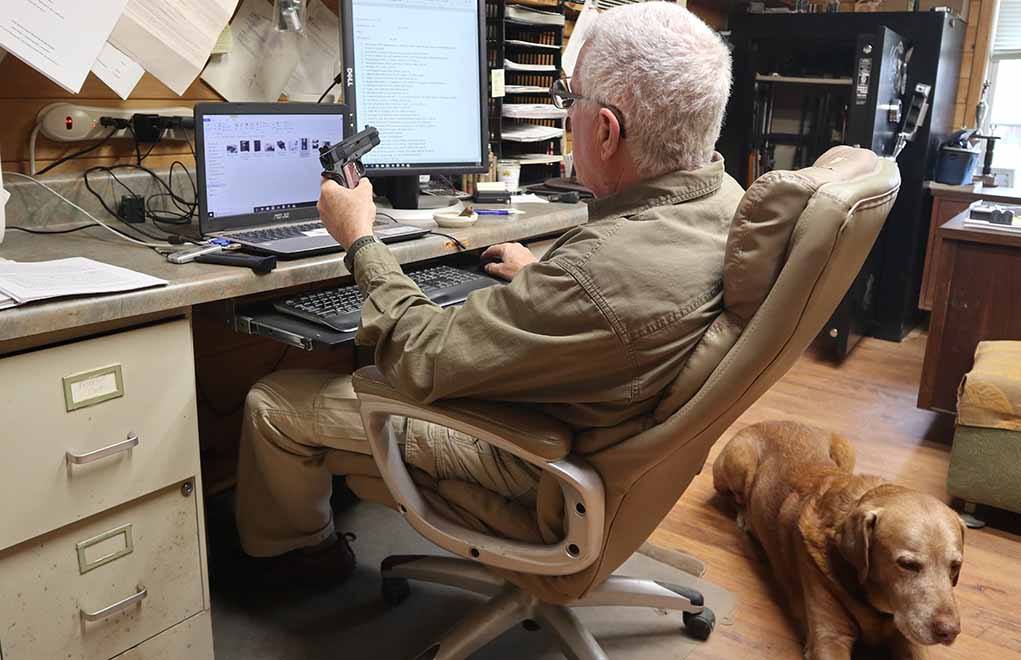
Commercial gun socks allow air to circulate and will prevent nicks and scratches when guns are moved around in the safe. Often, collectible guns are stored for long periods of time without attention, so make sure you open the safe and wipe them down from time to time.
While I’m fully aware that the following statement will bring the ire of some, I’m a strong proponent of using a cloth dampened with WD40 to wipe down guns. WD40 is a remarkable product that’s widely misunderstood. It isn’t a lubricant; it’s a water displacement product. I’ve used it for decades without a single problem, both with wood finishes and metal. During that time, I’ve never experienced a problem, and I use it exclusively to wipe down guns.
Insurance for Assurance
A safe is the first line of defense in protecting your firearms investment, but Mike’s story indicates just how difficult it is to protect it from truly determined thieves. While we normally think of collectible firearms as the most likely target because of their value, stolen handguns can be very valuable on the black market.
In both Mike and Alan’s cases, their homeowner’s insurance didn’t cover the value of their loss, because such policies have a pretty low limit of coverage on certain items. Most homeowner policies offer riders for firearms and similar items, but the cost per thousand is quite high.
Several years ago, I added a rider to cover my guns. It was quite expensive. However, while at SHOT Show, I found Collectibles Insurance, a company dedicated to coverage of firearms and other collectibles such as art, antiques and coins. I investigated and found a savings of more than 50 percent over my standard insurer.
You determine the level of coverage you need, and the cost per thousand is based on the level selected: The higher the level, the lower the cost per thousand. To determine your cost, simply call Collectibles Insurance with a level of coverage, and you will be given a quote. If you have a loss, the value of the lost items is determined by the company through standard methods, with rare and collectible item values based on searches of auctions and dealer networks. With standard modern firearms, only basic record-keeping is required. However, for high-value and rare firearms, documentation of their condition is important. Photographs are also important in helping dealers and auction houses determine value.
Records: Taking Notes
Of course, record-keeping is important and should be upgraded on a regular basis. Your records should cover serial number, model, caliber, condition, estimated value and any accessories or modifications. Guns no longer in current production should be documented with photographs. Store records in a separate location from the guns — preferably on a thumb drive and in another location. It’s a good idea to recheck your inventory at least once a year. Check for rust or other issues at that time as well.
I know it sounds tedious and potentially unnecessary, but in the event of fire or theft to your firearms collection, that thumb drive containing meticulous records will become as invaluable as your collection.
For many firearms owners, their total firearms inventory is as valuable as — or more valuable than — the family vehicle. Unlike most cars, gun collections appreciate in value. Therefore, it only makes sense to do everything you possibly can to protect that investment so it can be passed down in excellent shape as part of your legacy.
The article originally appeared in the May 2019 issue of Gun Digest the Magazine.

Next Step: Get your FREE Printable Target Pack
Enhance your shooting precision with our 62 MOA Targets, perfect for rifles and handguns. Crafted in collaboration with Storm Tactical for accuracy and versatility.
Subscribe to the Gun Digest email newsletter and get your downloadable target pack sent straight to your inbox. Stay updated with the latest firearms info in the industry.

![Best Concealed Carry Guns In 2025 [Field Tested] Wilson Combat EDC X9S 1](https://gundigest.com/wp-content/uploads/Wilson-Combat-EDC-X9S-1-324x160.jpg)


![Best 9mm Carbine: Affordable PCCs [Tested] Ruger Carbine Shooting](https://gundigest.com/wp-content/uploads/Ruger-Carbine-Shooting-100x70.jpg)
![Best AR-15: Top Options Available Today [Field Tested] Harrington and Richardson PSA XM177E2 feature](https://gundigest.com/wp-content/uploads/Harrington-and-Richardson-PSA-XM177E2-feature-100x70.jpg)
